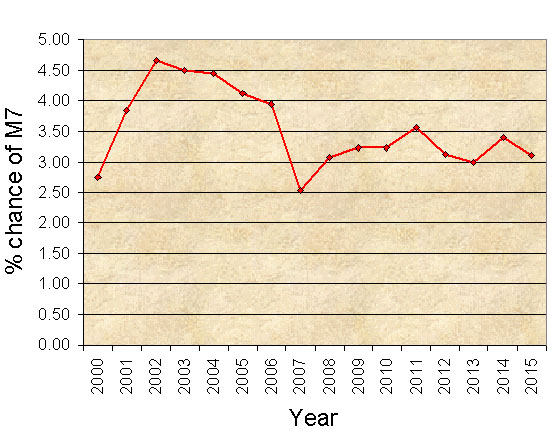Time dependent seismic hazard
PSHA makes use of a principle known as stationarity. This maintains that the seismic hazard at a place is constant in time, ie the expected intensity in 50 years is the same whether the 50 years in question starts in 1996 or 2006. Commonsense suggests that this is probably not true: in the case of an area where there has recently been a big earthquake, seismic energy has been dissipated and there should now be a long period before it builds up again; conversely there are other areas where a big earthquake appears to be due or even overdue.
Therefore modifications to the PSHA method have been made in which parameters describing average inter-event times, and time since last event, are introduced.
Unfortunately, recent research suggests that commonsense may be wrong. Large earthquakes like the 1994 Shikotan (NE of Japan) event have occurred in places where one might have thought the cycle was still building up after a recent quake, and seismic gaps have remained stubbornly free of earthquakes that were thought to be imminent. The stationarity assumption has therefore gained a new lease of life.
From an engineering view, time-dependent hazard is probably not very important. A typical building will have a life expectancy such that it doesn't matter whether the hazard is higher now or higher in 40 years' time. You only get one chance at designing it, and it needs to be safe for its whole expected life. On the other hand, for the reinsurance market, where premiums are set every year, it might be interesting to know if the hazard is higher this year than it was last year.



